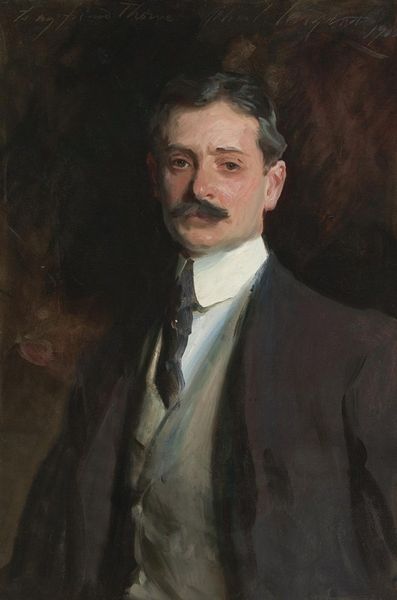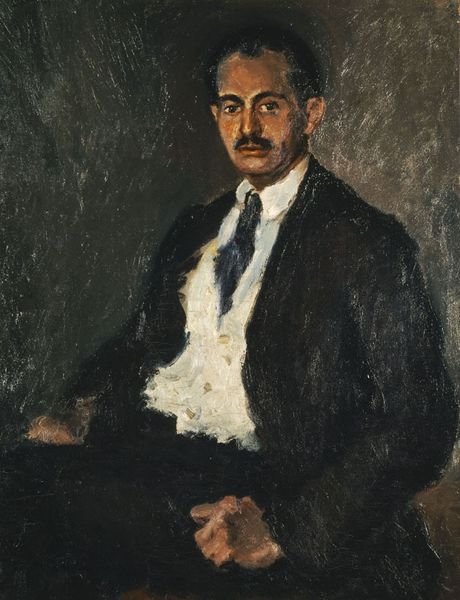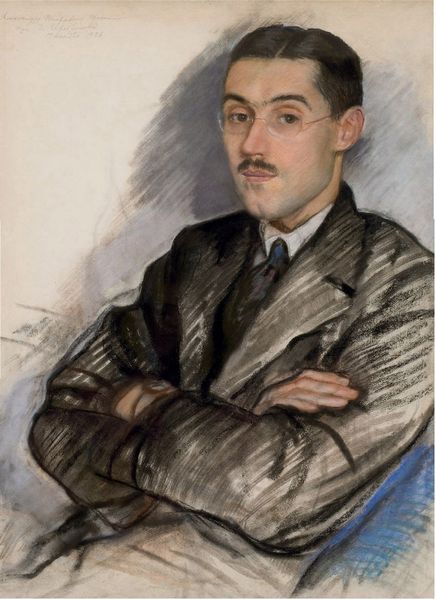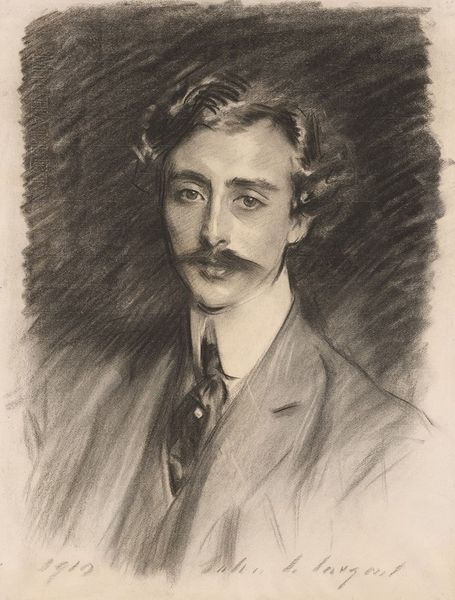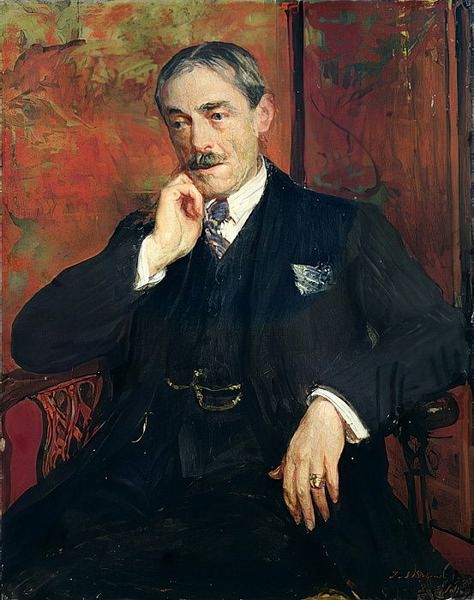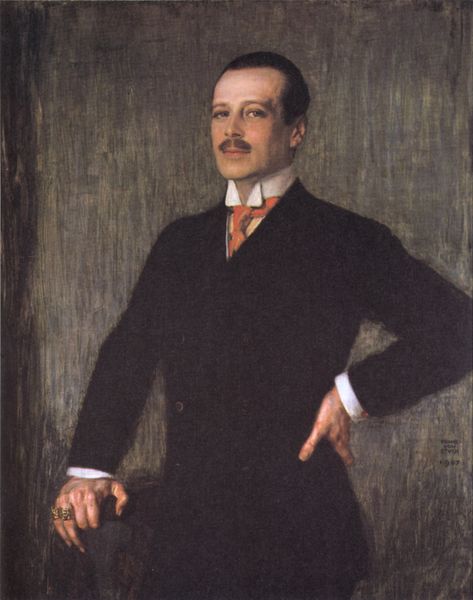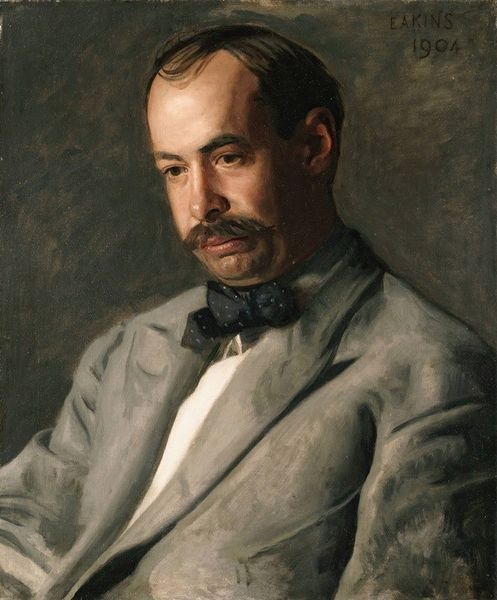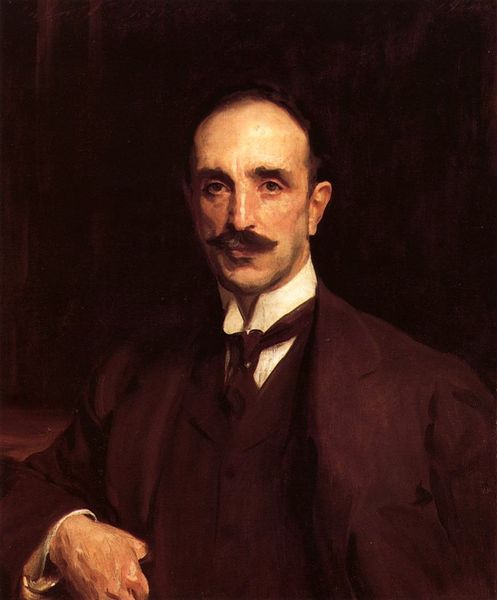
painting, impasto
#
portrait
#
portrait image
#
portrait
#
painting
#
portrait subject
#
impasto
#
portrait reference
#
portrait head and shoulder
#
facial portrait
#
portrait art
#
modernism
#
fine art portrait
#
realism
#
celebrity portrait
#
digital portrait
Copyright: Public domain
Curator: This is Lilla Cabot Perry’s 1916 portrait of the poet Edwin Arlington Robinson. Editor: He seems... perfectly buttoned-up. I get the sense he wouldn’t approve of our rather rambunctious conversation, trapped forever in that gray suit. I imagine he’s got reams of verse swirling behind that stern expression. Curator: It's fascinating to consider this work in relation to Perry’s broader oeuvre. While well-known for her landscapes, especially those created in Giverny, France, these portraits offer an intriguing view of her engagement with contemporary literary and artistic circles in America, positioning male intellectual figures within turn-of-the-century debates regarding national identity and cultural production. Editor: You know, those heavy, dark backgrounds and his almost severe formality definitely locate him within an earlier sensibility than, say, some of Perry’s Impressionistic landscapes. Is that impasto technique visible in the portrait a deliberate act of modernization? Curator: It definitely serves to draw attention to the materiality of the work, creating an object, not simply a representation. In painting Robinson this way, Perry challenges viewers to grapple with evolving notions of American masculinity. It is an assertive image. Editor: Assertive, yes, but is it a particularly warm assertion? The tight lips, the slight downward glance, all contained by that suit and somber color palette... maybe Robinson felt misunderstood, or maybe Perry saw something simmering beneath the surface of his outward persona. Curator: Exactly. What does it mean to be a male intellectual in a society undergoing radical changes? I read the subdued tones and formal composition as reflective of his societal position, yet challenged through the use of paint itself, as if about to disrupt these very readings. Editor: And that small ring on his left hand? A subtle hint of something just outside the frame of polite conversation. Maybe a little rebellion after all. Makes you wonder if his poems packed the same quiet punch. I’m actually intrigued now. I need to dive into Robinson's poetry, armed with this image. Curator: Absolutely. It demonstrates that portraits are seldom about the sitter themselves. Instead, the portrait, and the act of painting it, become evidence. Perry delivers not simply the likeness of a poet but also a compelling document from the period, seen through her individual experiences. Editor: That makes me want to go create my own kind of rebellion right now with charcoal and canvas! Thanks!
Comments
No comments
Be the first to comment and join the conversation on the ultimate creative platform.
